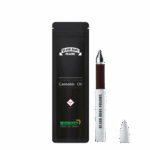The conversation around marijuana impairment testing while driving is often with misguided assumptions, outdated practices, and a misplaced reliance on pseudoscience.
An editorial published in the Journal of Studies on Alcohol and Drugs, titled Pseudoscience and the Detection of Marijuana-Based Impairment: We Can and Must Do Better, calls overdue attention to the inadequacies of current marijuana impairment testing methods.
It challenges the evidence (or lack thereof) behind roadside decisions that impact thousands of drivers annually while inviting a more scientific lens to drive equitable and effective policymaking.
Why Current Marijuana Impairment Tests Fall Short
Today, the methods used to detect marijuana-related impairment during traffic stops are riddled with issues. The Drug Recognition Expert (DRE) protocol, widely employed by U.S. law enforcement, using physical and behavioral cues to allegedly find impairment.
Drivers are tested using coordination tests, blood pressure readings, and evaluations of pupil size and muscle tone. While the process gives the impression of an evidence-based method, its foundation is far from scientific.
William J. McNichol, J.D., from Rutgers University Camden School of Law, aptly calls DRE assessments as “police science”—techniques created by law enforcement rather than validated as accurate by the scientific community.
Research in the editorial shows that DRE outcomes are often no better than a coin toss when it comes to determining actual impairment.
Stunningly, despite the lack of reliability, more than 8,000 officers across the U.S actively practice this, funded by federal programs.
Unlike alcohol, which has a measurable relationship between blood alcohol concentration (BAC) and impairment, marijuana operates in a different manner.
THC, the intoxicating compound in marijuana, metabolizes uniquely across individuals, displaying no consistent correlation between THC levels in the bloodstream and cognitive or motor impairment.
This void in measurable guidelines undermines marijuana consumers in an era where legal use is widespread.
The consequences are significant. These tests, performed with minimal scientific backing, not only fail to ensure road safety but also perpetuate inequities, disproportionately affecting communities who bear the brunt of dubious traffic stops and allegations.
Why Cannabis and Alcohol Cannot Be Measured the Same Way
One of the main barriers to ethical and accurate marijuana impairment detection lies in how deeply alcohol-centric testing has influenced legal and enforcement structures.
For decades, the breathalyzer has been memorialized as the exemplar of impairment detection efficiency. However, this approach to alcohol intoxication ignores the intricacies of cannabis’s interaction with the human body.
Alcohol is water-soluble and metabolized relatively predictably, which is why measuring BAC has become synonymous with gauging driver impairment.
Cannabis, on the other hand, is fat-soluble and binds to lipids, which can lead to THC remaining detectable in bodily fluids long after cognitive effects have worn off.
Unlike alcohol, marijuana impairment impacts individuals differently, with factors such as tolerance, mode of consumption, and frequency of use further influencing a person’s functional capabilities.
The glaring physiological differences between these substances highlight why using alcohol-inspired tools to test marijuana impairment is inherently flawed.
Instead of attempting to retrofit marijuana assessments into an alcohol-based framework, systems of evaluation must evolve to accommodate the nuances of marijuana consumption.
Changing the Narrative Around Cannabis Testing and Public Policy
This issue calls for a overhaul in researching, legislating, and executing marijuana impairment detection.
McNichol highlights that law enforcement has shouldered a responsibility better suited to scientists and public health experts.
While officers may hold roles in enforcing road safety, expecting them to lead discussions on substance-use science is unrealistic and unproductive.
McNichol is precise in his plea: the scientific community must take the reins in creating legislation and systems for detecting marijuana impairment.
This includes more research to understand marijuana’s physiological impacts and designing tools that measure active impairment rather than residual THC presence.
He also argues for collaborations between scientists and law enforcement to ensure data-driven practices that prioritize safety without getting rid of individual rights.
Leading scientists, such as Thomas D. Marcotte, Ph.D., and Robert L. Fitzgerald, Ph.D., have also written and called call for “robust validation” of detection method.
Their work emphasizes the potential for unbiased, scientifically backed tools to revolutionize the understanding of cannabis-impaired driving.
Innovation in this space could alleviate the subjective, distrustful nature of current procedures and move toward methods that align with principles of fairness and justice.
Funding the Future of Marijuana Impairment Testing Research
One prominent obstacle to creating scientifically validated solutions is funding allocation.
The legal marijuana industry has created billions in tax revenue across the United States, but states often allocate those funds to general budgets or use them to address budget shortfalls, leaving consumer issues largely unaddressed.
Allocating marijuana tax proceeds to research will open the door to advancements in impairment detection. By leveraging these funds for public health research, states can assure cannabis consumers that their tax dollars contribute to building fairer systems without undermining personal liberties.
McNichol is especially vocal about this point, urging policymakers to divert existing funds into research that benefits both public safety and cannabis consumers alike.
The Cannabis Community Deserves Better Testing Standards
The conversation around marijuana, consumption, and driving impairment cannot afford to remain mired in pseudoscience and outdated practices.
Legal marijuana use creates a host of policy questions which require an agile response based in evidence-based practices.
For marijuana consumers, fair impairment testing goes beyond avoiding technicalities during traffic stops; it ensures their rights are protected and prevents unfair targeting by methods lacking scientific support.
For society, it’s about building a system with integrity, and respect for individual liberties while protecting public roads.
The next phase of marijuana policy is here, and it calls for scientific leadership. Policymakers and the science community must take steps to ensure that marijuana impairment testing moves beyond faulty traditions and into reliable innovation.
















